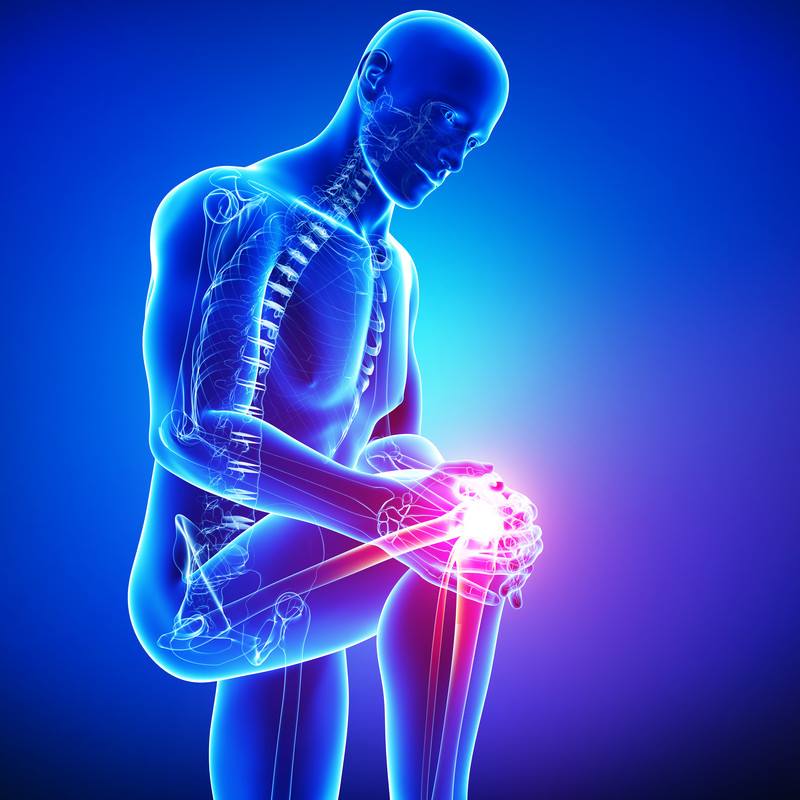
Rheumatoid Arthritis FAQ
What is rheumatoid arthritis (RA)?
Rheumatoid arthritis is a disease that affects your joints. It causes pain, swelling and stiffness. If joints on one side of your body have rheumatoid arthritis, usually the joints on the other side do too. It can affect any joint in the body. Rheumatoid arthritis can also make you feel sick and tired, and sometimes get fevers.
What’s the difference between rheumatoid arthritis and osteoarthritis (OA)?
RA is an autoimmune disorder that produces inflammatory joint symptoms throughout the body. OA is a degenerative condition that is the result of increased wear and tear on joints. OA may produce inflammatory symptoms as well, but it primarily destroys joint cartilage over time.
Both RA and OA are more prevalent in women than in men. RA can develop in patients aged 30 to 60 at any time. OA generally develops later in life. Courses of treatment can also vary.
What are the symptoms of rheumatoid arthritis?
Symptoms can range from mild to severe, including:
- Tender, warm and swollen joints
- Swollen joints on both sides of the body, such as your hands and wrists
- Swelling in other joints, including the neck, shoulders, elbows, hip, knees, ankles and feet
- A feeling of weariness and low energy
- Fever
- Pain and stillness lasting more than 30 minutes in the morning
- Symptoms that go on for years
What causes RA?
Doctors don’t know the exact cause, but they have identified several factors, The immune system normally attacks invaders to the body, such as a cold virus or bacteria, but with this type of arthritis, a person’s immune system attacks his or her own body tissues. Researchers are learning many things about why and how this happens.
Other causes of RA may include:
- Inherited genes
- Environmental factors
- Hormones
Is there a test for RA?
There is no single specific test. It can be difficult to diagnose because the symptoms are often the same as other kinds of joint disease and can take time to fully develop. Doctors use medical history, a physical exam, x-rays, imaging tests and lab tests to make a diagnosis.
How is RA treated?
Fortunately, physicians have many ways to treat the disease, including medications, surgery, regular check-ups and complementary therapies.
Most people with RA take medications to relieve pain, reduce swelling and to stop the disease from getting worse. What a doctor prescribes depends on:
- Your general healh
- How serious the disease is
- How serious it will become
- How long you will take the drug and how well it will work
- Possible side-effects
Depending upon the severity of the disease, surgery may be recommended. It can help to:
- Reduce pain
- Help your joint work more effectively
- Help you to resume your daily activities
Regular medical check-ups are essential in order for your doctor to:
- See if the disease is worsening
- Monitor the effectiveness of the medications
- Check for adverse side-effects
- Change treatment as necessary
Complementary therapies include special diets, vitamins and behavioral changes such as weight loss and joint care.
“Here are OPI we use a multi-disciplinary team approach to treating rheumatoid arthritis,” says Dr. Alexandra S. Matthews. “Often we work with rheumatologists, physical therapists and other health care providers to ensure maximal improvement in pain and quality of life.”
If you have any of the symptoms described above, contact Orthopedic Performance Institute today.

 Previous Post
Previous Post Next Post
Next Post




